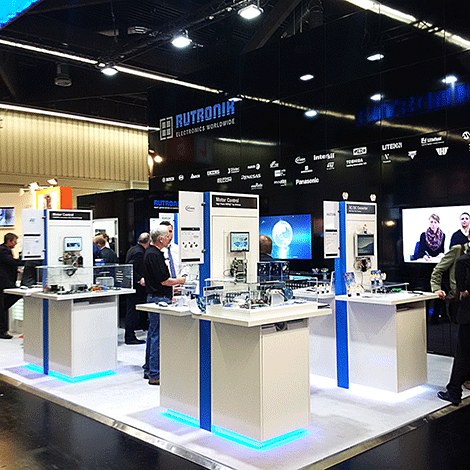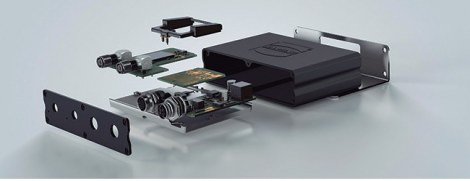We are lucky to work in a very dynamic industry, especially in the nascent phase of the Internet of Things. Certainly, these are times of change for everyone, there are price pressures that make it necessary to reduce margins, and in this scenario distributors also have to adapt. Yet these challenges are offset by the opportunities that arise from the innovations themselves, both in the largest industrial organizations, as well as in start-ups and in social communities. Without a doubt, the main engine of our current industry is the Internet of Things (IoT). Virtually all vendors are producing new wireless microcontrollers and development boards with embedded sensors, all with the goal of creating end-point IoT solutions and gateways for the new protocols. The massive rise of connectivity and the “democratization” of technology is what facilitates access to hardware and software, energizing industries in virtually all market sectors, as society explores new possibilities for developing applications. IoT.
technological confluence
The Internet of Things is being driven by several technological and market factors, such as: greater network connectivity, the emergence of low-power wireless products, RF microcontroller technologies, new BLE (Bluetooth Low-Energy) communication protocols, competitively priced smart boards and sensors, end-point devices, gateways and cloud services. Any overview of IoT products shows that there is a real boom in the development of boards, pre-integrating short-range connectivity such as BLE, Wi-Fi or Ethernet. The new Raspberry Pi 3 is one of many examples of communications integration emerging as a standard for developing IoT applications, although there are many others such as Arduino, based on Genuino 101 for Intel or the Arrow SmartEverything IoT development board. Today there are wireless development kits and boards that cost very little, as opposed to hundreds of dollars a few years ago. This heyday of plates, which also have power, means that companies no longer need to make large investments to develop new technologies related to electronics. Beyond all this, the price reduction allows society to explore new useful IoT applications for urban environments. A current example is the use of low-cost sensors associated with a LoRaWAN IoT network in Calderdale, establishing a flood control system. Powerful networks like SIGFOX and LoRaWAN, available in many Western European cities, are already starting to have a significant impact in driving IoT applications. The relatively low cost of the technology – Microchip's LoRaWAN boards are one of many examples – is motivating the development of new projects. Industrial IoT From a distribution standpoint, we're also seeing an increase in the number of companies coming up for the first time – or not traditionally associated with electronics development – looking to do new things. Particularly, this is the case of industrial automation. The industry comes with traditional systems and equipment from decades ago, but the opportunity for the manufacturing and process control industries is to unveil 'Industry 4.0' and smart factories, connecting systems and processes never before connected and taking advantage of the services offered by the cloud. In this sense, a key application of the automation industries is predictive and preventive maintenance, which makes it possible to reduce equipment downtime. Another specific advantage is the greater efficiency of industrial processes, based on more complex robotics and motor control solutions, using less energy to comply with energy saving regulations. Semiconductor providers such as TI or Analog Devices are developing new microcontrollers highly integrated with DSP technology for processing, sensing and control applications, always taking advantage of the opportunities that appear in the field of industrial automation. In addition, another great opportunity for distribution is the replacement of parts with new devices, for example, the offer based on IP, Ethernet and EtherCAT connectivity for process control applications, or sensors to monitor operational processes and environments. A very innovative product is the groov system with hardware and software, which converts RS232/422/485 signals into Ethernet data to be integrated into IoT systems, easily creating a mobile interface that allows devices, systems and equipment to be controlled from a smartphone. or from a tablet. Again, the low cost and availability of a wide range of wireless development platforms allow these types of companies to easily enter the world of electronics and IoT application development with little risk. They provide an easy starting point without the need for a large repository of electronics know-how.
Democratization
There is another important trend that is changing our industry and how dealers respond to their customers: it is about the democratization of technology. That is, there are a number of accessible technologies, tools, and resources that allow you to quickly and relatively inexpensively prototype electronics (for larger organizations as well as smaller ones). A key element of this democratization is the availability of low-cost development kits, along with the growing repository of open-source software and the growing number of online resources provided by semiconductor vendors and distributors to support engineers. RS plays an important role in democratizing technology with its DesignSpark platform, which offers free PCB design and 3D modeling tools – and newer DesignSpark Electrical. Another important aspect is fast and easy prototyping, which is increasing with the advent of desktop 3D printers and prototyping machines. The rise of online crowdfunding –with platforms like Kickstarter– also plays an important role. In addition to traditional options such as venture capital, crowdfunding can offer an alternative opportunity to start-ups and emerging social communities. Adapteva's Parallella board is a successful example that has chosen this path for its development.
Much more than a product
How dealers deal with these changes is another matter. Naturally, specialization is essential in the distribution offer, but more than ever they have to go beyond the needs of different customers, including those new to the world of electronics. Without a doubt, RS is positioned on the podium with one of the largest electronics portfolios, which includes perhaps the most extensive selection of easy-to-use development kits, along with global logistics and eCommerce infrastructure to improve service. delivery and make it faster. However, more and more resources and greater flexibility are needed to meet the needs of the wide variety of customers in different scenarios (from the more traditional purchases made by purchasing managers to large companies), offering design tools and support. The challenge that global distributors like RS have is to be the link between customers and products, being from the beginning of the path of electronic innovation.





